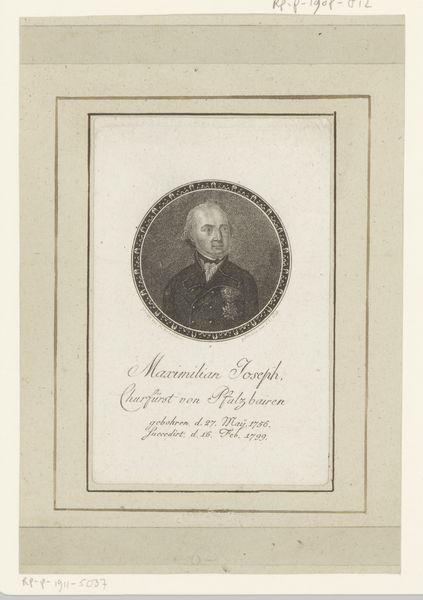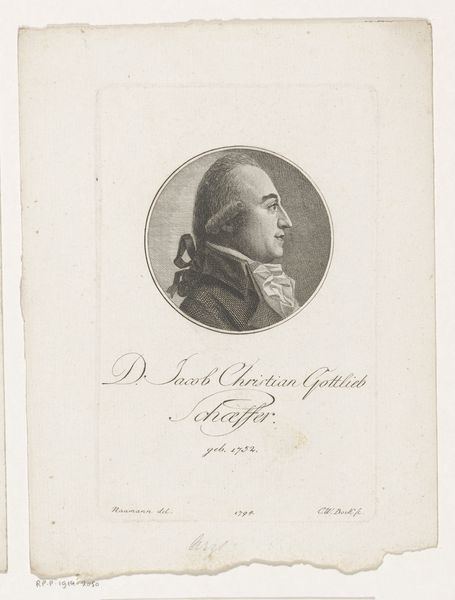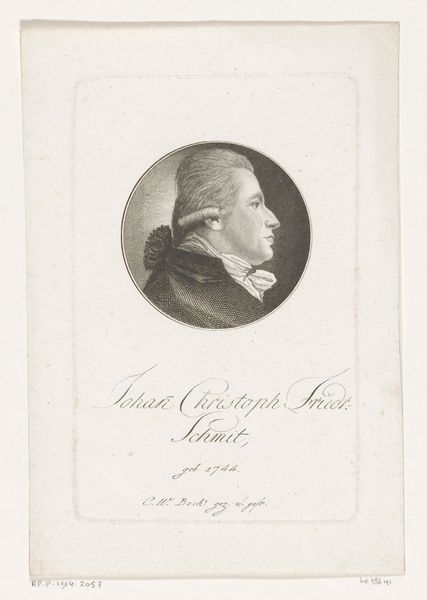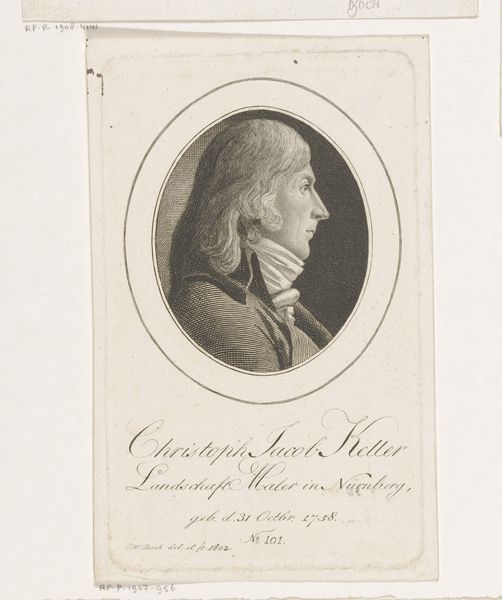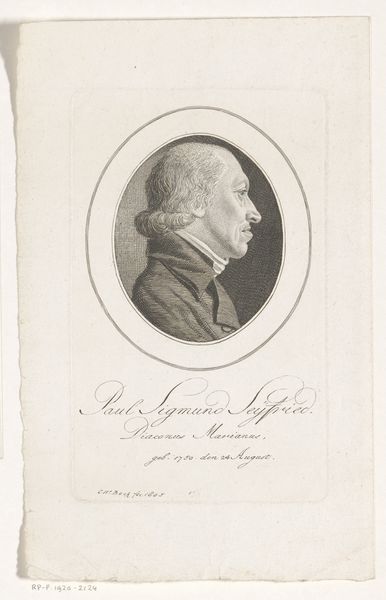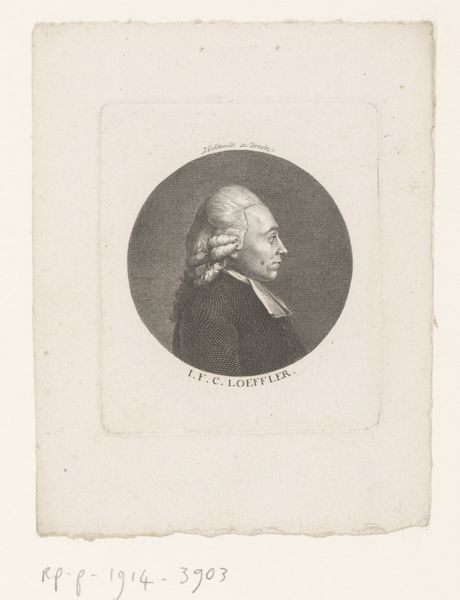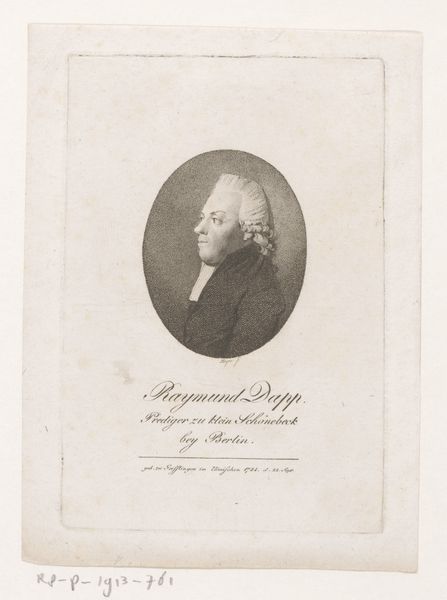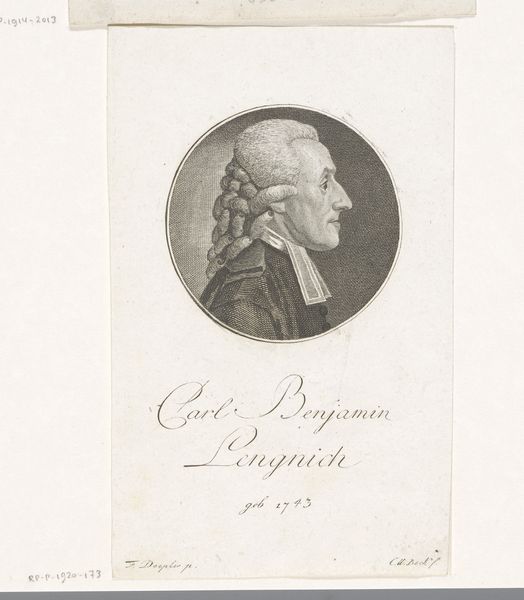
drawing, engraving
#
portrait
#
pencil drawn
#
drawing
#
neoclacissism
#
pencil sketch
#
old engraving style
#
pencil drawing
#
engraving
Dimensions: height 156 mm, width 107 mm
Copyright: Rijks Museum: Open Domain
Christoph-Wilhelm Bock created this portrait of Christian Gottfried Junge using etching, a process that employs lines to build tone and form. The image presents a profile of Junge set within an oval frame, a common structure for formal portraits. The precision of the etched lines captures the texture of the wig and the details of his coat. Notice how the structured lines and curves create a sense of order and containment. The oval itself acts as a signifier, framing and classifying the subject, reducing any chaotic potential. This controlled presentation reflects Enlightenment ideals of reason and order. However, this controlled structure also serves to highlight the artificiality of representation itself. The detailed rendering of the wig, for instance, calls attention to the constructed nature of identity during this era. Ultimately, Bock’s portrait doesn't just represent Junge; it reflects the complex interplay between representation, identity, and social structure of the 18th century.
Comments
No comments
Be the first to comment and join the conversation on the ultimate creative platform.

